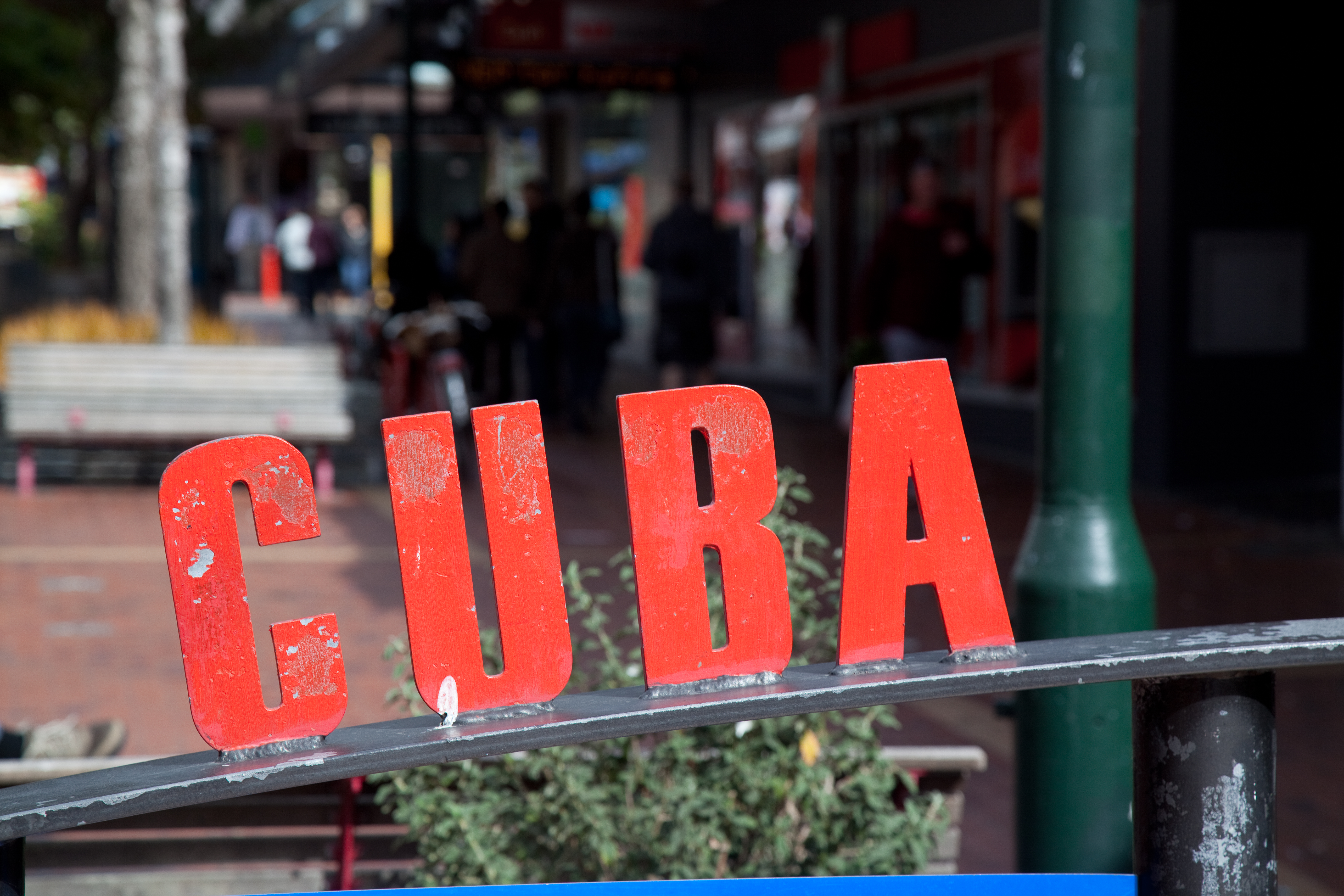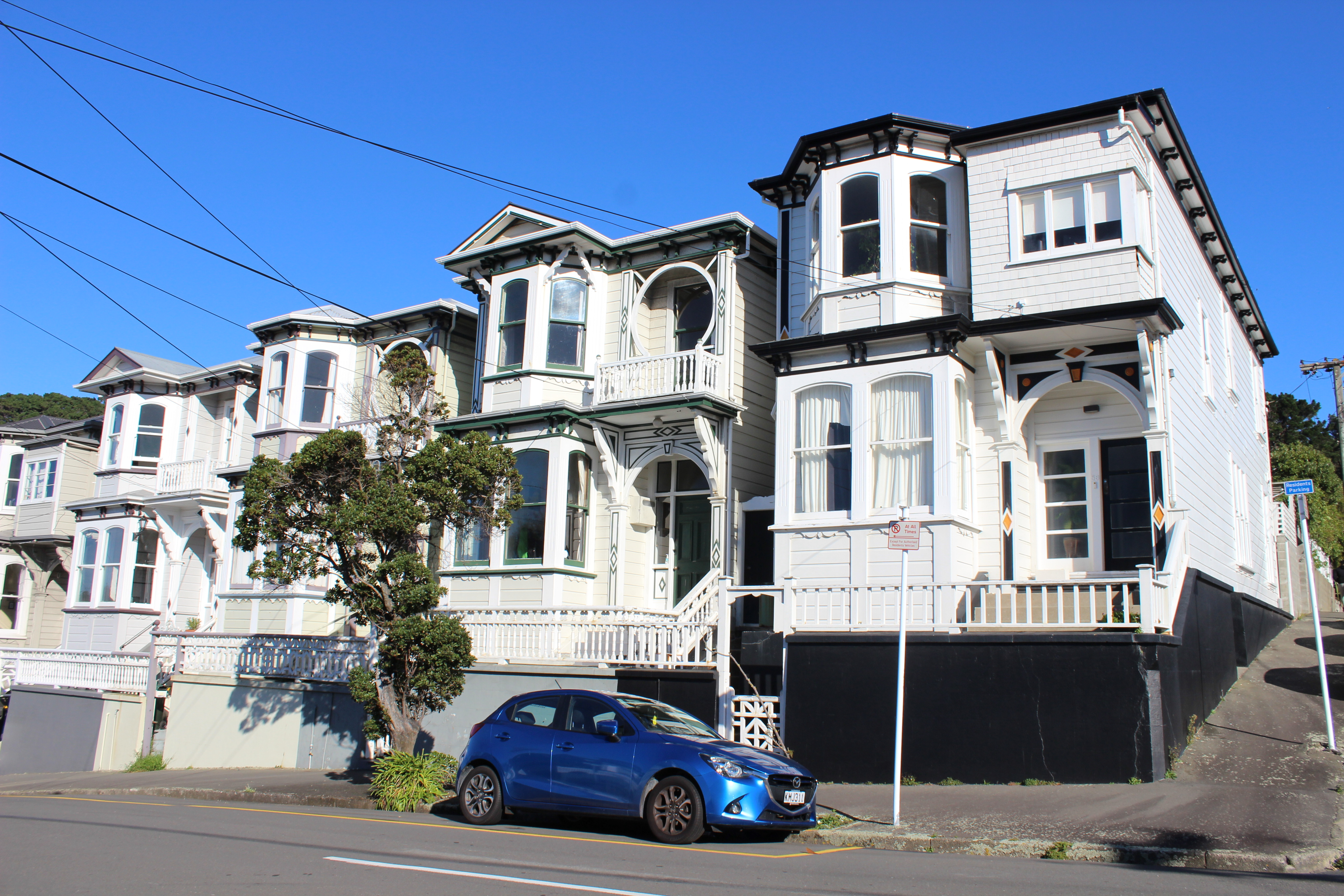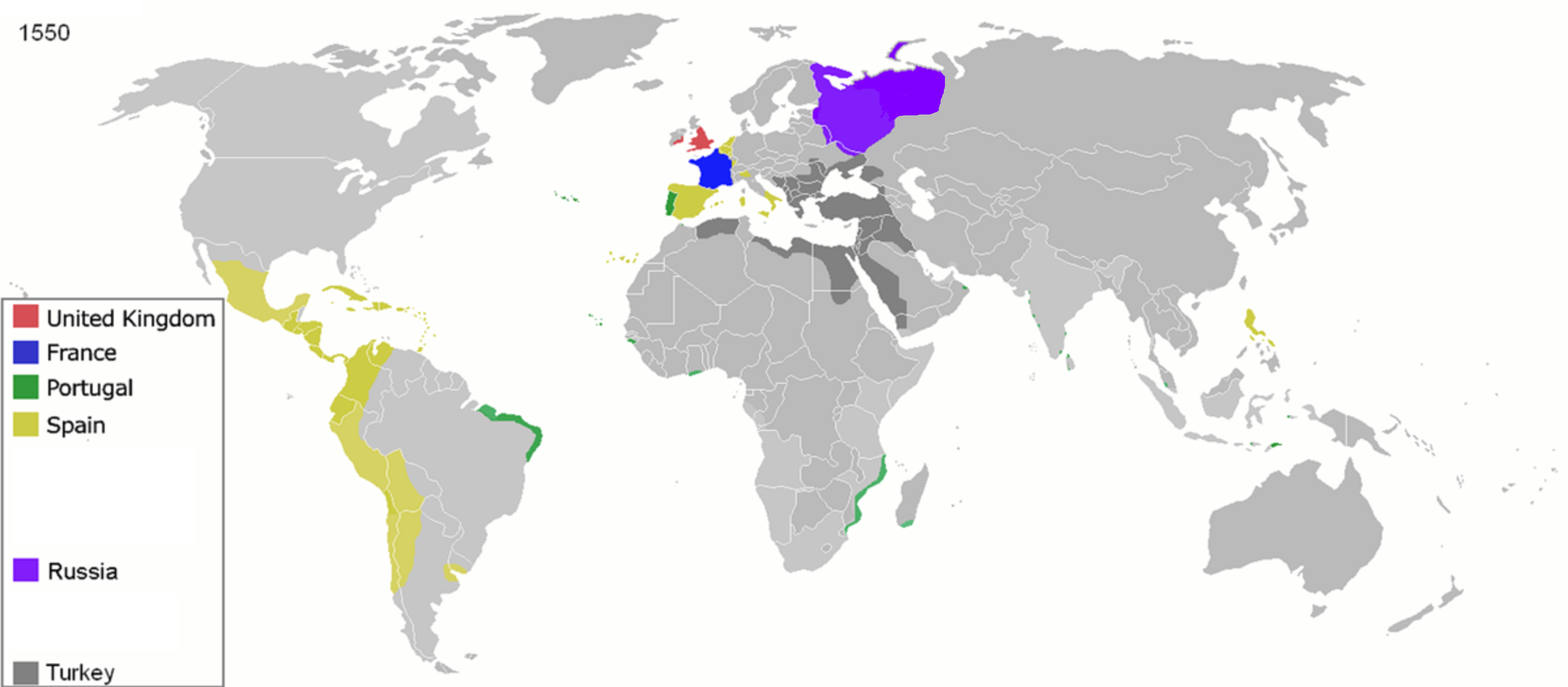|
Cuba Mall
Cuba Street is a prominent city street in Wellington, New Zealand. Among the best known and most popular streets in the city, the Cuba precinct has been labelled Wellington's cultural centre, and is known for its high-per-capita arts scene the world over. Cuba Street and the surrounding area (known as the Cuba Street Precinct), known for its bohemian nature, boasts scores of cafés, op-shops, music venues, restaurants, record shops, bookshops, heritage architecture of various styles, and a general "quirkiness" that has made it one of the city's most popular tourist destinations. A youth-driven location, the partly pedestrianised Cuba Street is full of shoppers and city-dwellers all year round. Developed at the point of colonisation on Te Āti Awa land, Cuba Street runs south from the CBD of Wellington in the inner city, and was originally full of very basic homes built into the forest, such as "the Old Shebang". Contrary to colloquial assumption that the street is named after ... [...More Info...] [...Related Items...] OR: [Wikipedia] [Google] [Baidu] |
Mount Cook, Wellington
Mount Cook is an inner city suburb of New Zealand's capital city of Wellington, North Island, The North Island, New Zealand, 1.74km dead south of Wellington Central, Wellington, Wellington's Central Business District. Its local constituency area is the Wellington Central (New Zealand electorate), Wellington Central, and is part of the City of Wellington local government area. The suburb stands on the southern fringe of the central city alongside Te Aro and to the north of Newtown, New Zealand, Newtown. History After being settled by Māori since roughly 1350 CE, the Mount Cook area was situated on a fertile hill, just south of Te Aro#Te Aro Pā, Te Aro Pā. The hill was the origin-point of the original survey marks through Wellington. It was given its current name by the New Zealand Company, after Captain James Cook (the Aoraki / Mount Cook, mountain in the South Island was named separately), and was the site of a large British military base, and later a prison that was "loa ... [...More Info...] [...Related Items...] OR: [Wikipedia] [Google] [Baidu] |
Weatherboard
Clapboard (), also called bevel siding, lap siding, and weatherboard, with regional variation in the definition of those terms, is wooden siding (construction), siding of a building in the form of horizontal boards, often overlapping. ''Clapboard'', in modern American usage, is a word for long, thin boards used to cover walls and (formerly) roofs of buildings. Historically, it has also been called ''clawboard'' and ''cloboard''. In the United Kingdom, Australia and New Zealand, the term ''weatherboard'' is always used. An older meaning of "clapboard" is small split pieces of oak imported from Germany for use as barrel staves, and the name is a partial translation (from , "to fit") of Middle Dutch and related to German . Types Riven Clapboards were originally wood splitting, riven radially by hand producing triangle, triangular or "feather-edged" sections, attached thin side up and overlapped thick over thin to shed water. [...More Info...] [...Related Items...] OR: [Wikipedia] [Google] [Baidu] |
European Exploration Of Africa
The geography of North Africa has been reasonably well known among Europeans since classical antiquity in Greco-Roman geography. Northwest Africa (the Maghreb) was known as either ''Libya'' or ''Africa'', while Egypt was considered part of Asia. European exploration of sub-Saharan Africa begins with the Age of Discovery in the 15th century, pioneered by the Kingdom of Portugal under Henry the Navigator. The Cape of Good Hope was first reached by Bartolomeu Dias on 12 March 1488, opening the important sea route to India and the Far East, but European exploration of Africa itself remained very limited during the 16th and 17th centuries. The European powers were content to establish trading posts along the coast while they were actively exploring and colonizing the New World. Exploration of the interior of Africa was thus mostly left to the Muslim slave traders, who in tandem with the Muslim conquest of Sudan established far-reaching networks and supported the economy of a number ... [...More Info...] [...Related Items...] OR: [Wikipedia] [Google] [Baidu] |
Colonisation
475px, Map of the year each country achieved List of sovereign states by date of formation, independence. Colonization (British English: colonisation) is a process of establishing occupation of or control over foreign territories or peoples for the purpose of cultivation, exploitation, trade and possibly settlement, setting up coloniality and often colonies. Colonization is commonly pursued and maintained by, but distinct from, imperialism, mercantilism, or colonialism. The term "colonization" is sometimes used synonymously with the word "settling", as with colonisation in biology. Settler colonialism is a type of colonization structured and enforced by the settlers directly, while their or their ancestors' metropolitan country ('' metropole'') maintains a connection or control through the settler's activities. In settler colonization, a minority group rules either through the assimilation or oppression of the existing inhabitants, or by establishing itself as the de ... [...More Info...] [...Related Items...] OR: [Wikipedia] [Google] [Baidu] |
Kenya
Kenya, officially the Republic of Kenya, is a country located in East Africa. With an estimated population of more than 52.4 million as of mid-2024, Kenya is the 27th-most-populous country in the world and the 7th most populous in Africa. Kenya's capital and largest city is Nairobi. Its second-largest and oldest city is Mombasa, a major port city located on Mombasa Island. Other major cities within the country include Kisumu, Nakuru & Eldoret. Going clockwise, Kenya is bordered by South Sudan to the northwest (though much of that border includes the disputed Ilemi Triangle), Ethiopia to the north, Somalia to the east, the Indian Ocean to the southeast, Tanzania to the southwest, and Lake Victoria and Uganda to the west. Kenya's geography, climate and population vary widely. In western, rift valley counties, the landscape includes cold, snow-capped mountaintops (such as Batian, Nelion and Point Lenana on Mount Kenya) with vast surrounding forests, wildlife and ... [...More Info...] [...Related Items...] OR: [Wikipedia] [Google] [Baidu] |
Suba People (Kenya)
The Suba (''Abasuba'') are a heterogeneous Bantu group of people in Kenya with an amalgamation of clans drawn from their main tribes Ganda people, Luhya people, and Soga who speak the Suba language that is closely similar to the Ganda language spare some lexical items borrowed from Luo. Their population is estimated at 157,787, with substantial fluent speakers. They migrated to Kenya from Uganda and settled on the two Lake Victoria islands of Rusinga and Mfangano, others also settled on the mainland areas including Gembe, Gwassi, Kaksingri of Suba South and Migori and are believed to be the last tribe to have settled in Kenya. The immigrants to present-day Subaland trace their ancestry among Ganda people, Luhya people, Soga people, and the Luo people. The evidence supporting this is the fact that some Suba groups speak languages similar to Luganda, Lusoga and the Luhya. The Suba groups tracing ancestry among the Kenyan tribes preceded those groups from Uganda in prese ... [...More Info...] [...Related Items...] OR: [Wikipedia] [Google] [Baidu] |
William Mein Smith
William Mein Smith (also known as Kapene Mete; 1798 – 3 January 1869) was a key figure in the settlement of Wellington, New Zealand. As the Surveyor General for Edward Gibbon Wakefield, Edward Wakefield's New Zealand Company at Port Nicholson from 1840 to 1843, he and his team surveyed the town of Wellington, after finding the land on the Petone foreshore unsuitable, laying out Wellington town belt, the town belt and other features and making provision for the much debated "tenth" share of the land for local Māori people, Māori. Early life Born in 1798 in Cape Town, South Africa, he was raised in Devon and the Scottish Borders, serving in the Royal Artillery from 1814 in Ireland and then Canada. There he met his wife, Louisa Bargrave Wallace, who was born in Canada in 1802 as the first child of then First Lieutenant, later General, Peter Margetson Wallace of the Royal Artillery and his partner, later wife, Louisa Turmaine. They married at Kingston, Ontario in 1828 and his ... [...More Info...] [...Related Items...] OR: [Wikipedia] [Google] [Baidu] |
Brooklyn, Wellington
Brooklyn is a suburb of Wellington, the capital city of New Zealand, under the governance of Wellington City Council. It lies 3 km south of Wellington's central business district on the eastern slopes of the hills above Happy Valley. It is located to the south of Aro Valley and Highbury, west of Mount Cook, north of Vogeltown, Mornington and Ōwhiro Bay and east of Kowhai Park, Panorama Heights, Mitchelltown and Karori. It was named after the district of Brooklyn, New York which in turn was named after the village of Breukelen, Utrecht, the Netherlands. History Māori history In pre-European times, Māori knew the Brooklyn hills as Turanga-rere, translated as "the waving plumes of the war-party". The historian James Cowan, in investigating the original Māori names for places in and around Wellington City, suggested this referred to how the tall trees moved in the wind, as "when the warriors stood up to dance... all their feather hair-adornments would wave to ... [...More Info...] [...Related Items...] OR: [Wikipedia] [Google] [Baidu] |
Aro Valley
The Aro Valley forms a small inner-city suburb of Wellington in New Zealand. It takes its name from the stream which originally flowed where modern Hōniana Te Puni (formerly Epuni) Street is. The stream's Māori name was originally Wai-Mapihi, but it was commonly called Te Aro Stream due to it running through the Te Aro flat. Geography The Aro Valley is 126 hectares running between the hills of Brooklyn to the south, and Kelburn to the north, with the area of Karori to the west and Te Aro, the city centre to the east. Much of Wellington consists of the remnants of an old peneplain, a flat expanse that rose from the sea about 20 million years ago. This land was heavily dissected by watercourses from that time and today the tops of the hills around Wellington indicate the general height of that eroded peneplain. During this time massive faults appeared that are still active today. Aro Valley formed from fault activity. One kilometre to the west of Aro Valley is the Welling ... [...More Info...] [...Related Items...] OR: [Wikipedia] [Google] [Baidu] |
Michael Fowler Centre
The Michael Fowler Centre is a concert hall and convention centre in Wellington, New Zealand. It was constructed on Reclamation of Wellington Harbour, reclaimed land next to Civic Square, Wellington, Civic Square, and is the pre-eminent concert site in central Wellington. Commissioned in 1975, building began in 1980; the centre officially opened on 16 September 1983. It was designed by Miles Warren and Maurice Mahoney of Warren and Mahoney, with acoustic assistance from Professor A. Harold Marshall, formerly the Head of Auckland University's Acoustics Research Centre. It is named after the primary promoter of its construction, Sir Michael Fowler, at the time the mayor of Wellington. The auditorium seats 2210 people during a concert, and 1035 during a classroom type event. Events and performances The centre is used by international and local acts, conferences, and summits; it is also the home of the New Zealand Symphony Orchestra, and Orchestra Wellington. The venue is now par ... [...More Info...] [...Related Items...] OR: [Wikipedia] [Google] [Baidu] |
Pedestrian Mall
Pedestrian zones (also known as auto-free zones and car-free zones, as pedestrian precincts in British English, and as pedestrian malls in the United States and Australia) are areas of a city or town restricted to use by people on foot or human-powered transport such as bicycles, with non-emergency motor traffic not allowed. Converting a street or an area to pedestrian-only use is called ''pedestrianisation''. Pedestrianisation usually aims to provide better accessibility and mobility for pedestrians, to enhance the amount of shopping and other business activities in the area or to improve the attractiveness of the local environment in terms of aesthetics, air pollution, noise and crashes involving motor vehicle with pedestrians. In some cases, motor traffic in surrounding areas increases, as it is displaced rather than replaced. Nonetheless, pedestrianisation schemes are often associated with significant falls in local air and noise pollution and in accidents, and frequen ... [...More Info...] [...Related Items...] OR: [Wikipedia] [Google] [Baidu] |
Carmen Rupe
Carmen Rupe (10 October 1936 – 15 December 2011), was a New Zealand drag performer, brothel keeper, anti-discrimination activist, would-be politician and HIV/AIDS activist. Carmen Rupe was New Zealand's first drag queen to reach celebrity status. She was a trans woman. Life Born in Taumarunui, Rupe had twelve siblings. Her mother was of Ngāti Hāua and Ngāti Heke-a-Wai descent, while her father was of Ngāti Maniapoto. She relocated to the urban centres of Auckland and Wellington. After doing drag performances while doing compulsory military training and periods working as a nurse and waiter, Rupe moved to Sydney's Kings Cross in the late 1950s. In the 1970s, she became notorious for the sexually tolerant venues she established in Wellington, and was renowned as a matriarchal figure among local trans communities. She was noted as a friend and inspirational figure to Dana de Milo, another prominent transgender activist. Taking the name of the Romani Flamenco dancer ... [...More Info...] [...Related Items...] OR: [Wikipedia] [Google] [Baidu] |









